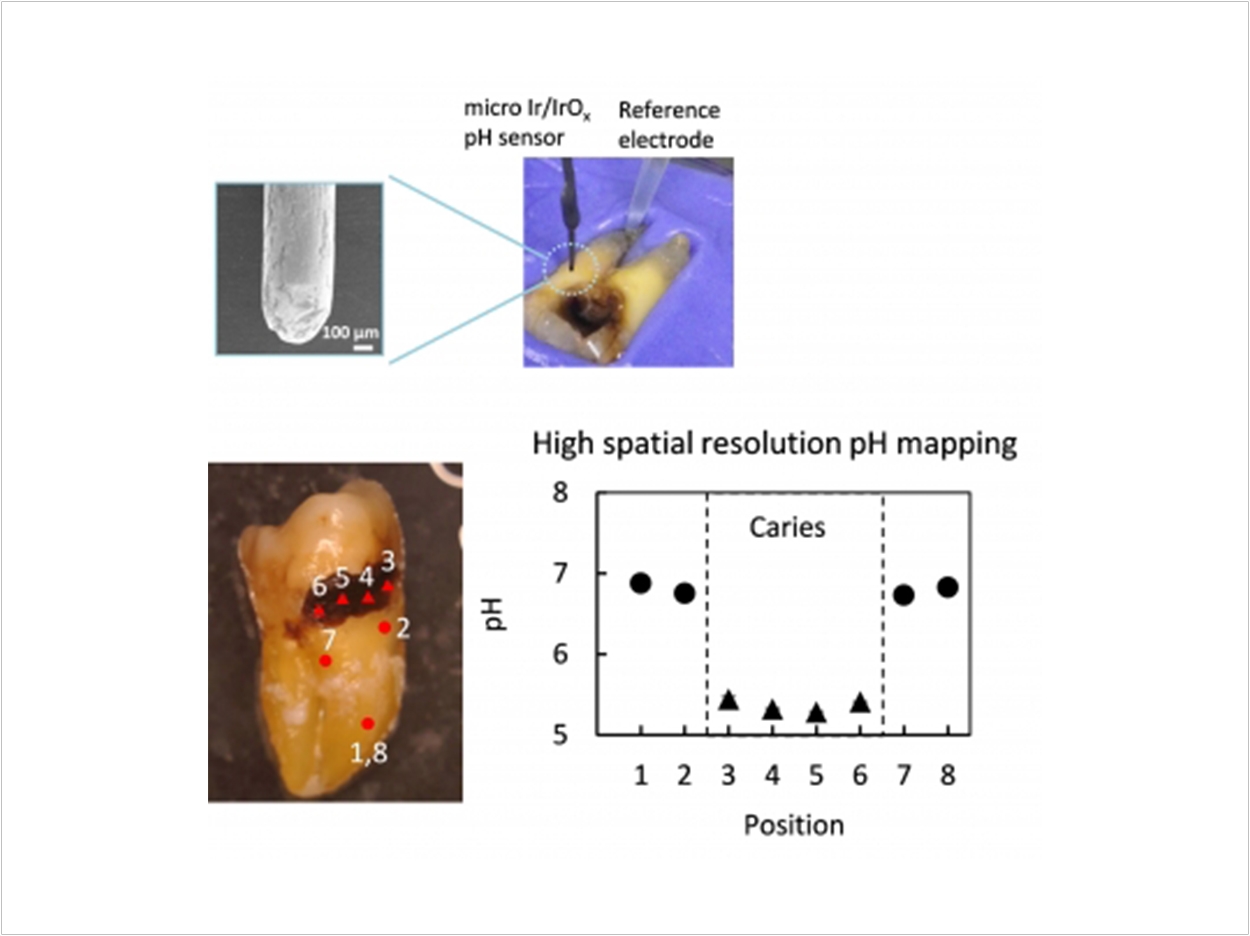
Researchers at Tokyo Medical and Dental University (TMDU) have developed a pH sensor that can identify regions of acidity on teeth related to caries-causing bacteria without the need for subjective judgments by dentists or exposing patients to x-rays or other invasive procedures. According to the researchers, the device provides accurate and quantitative findings about vulnerability to tooth decay.
Based in iridium oxide, the sensor has a diameter measuring one-thirtieth of a centimeter, so it can be used to analyze small, specific patches of tooth surfaces where localized caries may have become established. Its small dimensions also mean it can be used to analyze cavities or closely apposing surfaces of teeth where conventional visual examinations cannot be performed.
“After creating this sensor and testing its accuracy on standard pH solutions, we analyzed it using 18 extracted human teeth with different levels of caries,” said Yuji Miyahara, PhD, of the TMDU Institute of Biomaterials and Bioengineering. “It could identify significant differences in pH levels among sites known to have active caries, sites with arrested caries, and healthy unaffected roots.”
The team also found that the results obtained with the new sensor matched well with the findings of visual inspection by a dentist, suggesting that this approach is robust and reliable. It can avoid any subjectivity associated with the conventional visual analysis by providing an objective, quantitative screening tool.
“This new tool should help us to identify tooth decay at an earlier stage, enabling better and less invasive treatments,” said Miyuki Tabata, PhD, assistant professor at the Institute of Biomaterials and Bioengineering. “It also helps us to distinguish between cases of active caries and cases or arrested caries in which remineralization has started to occur, for which different treatments would be applied.”
The study, “pH Mapping of Tooth Surfaces for Quantitative Caries Diagnosis Using Micro Ir/IrOx pH Sensor,” was published by Analytical Chemistry.
Related Articles
Petition Aims to End the Sales of Dangerously Acidic Oral Moisturizers
AAO Ranks the Acid Levels in Popular Drinks
Dietary Sensor Fits Right on a Tooth












